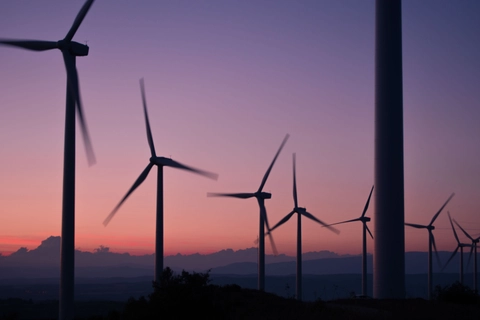Electricity non-commodity costs, also known as Third Party Charges (or TPCs), are faced by the vast majority of end consumers that use electricity. They represent a significant proportion of the energy bill for domestic, SME and large industrial user types; however, their applicability and scale can vary depending on the type of user. Furthermore, determining the future direction of such charges can be difficult, particularly amid a host of policy and regulatory changes ongoing in the market.
At Cornwall Insight, through our industry knowledge and involvement in the relevant workstreams, we have been forecasting TPCs for a wide variety of end consumer types for many years. This is through both our subscription services and by providing bespoke long-term forecasts that are site specific and tailored to the unique characteristics of the user. More recently, we have seen a new type of user seeking these forecasts, which as a potentially very large future consumer of electricity, is highly important to their developing business cases. What type of users you ask? Hydrogen electrolysers.
If connected to or using imported grid power, electrolysers will be exposed to TPCs just like other end users. These can broadly be divided into those relating to recovering the costs of using and balancing the electricity network, and those relating to the cost of implementing government energy and environmental policy.
Why the interest?
The particular interest from electrolysers has come in light of the Hydrogen Allocation Rounds (HAR) being run by government. Prospective electrolyser projects are able to bid into each Allocation Round to receive support under the Hydrogen Business Models scheme, as well as to receive CAPEX support through the Net Zero Hydrogen Fund. HAR1 was held in 2022 and has just recently concluded, while HAR2 commenced in 2023 will be ongoing across 2024.
Obtaining up to date accurate information and forecasts about future electricity costs is crucial in preparation for negotiations when obtaining government support. The costs faced by these prospective electrolysers depend on a variety of elements, including the connection level, size, location, load factor, operating profile, and eligibility for any potential exemptions. Further, the potential for future change to various TPCs and/ or exemption schemes needs to be considered. Here are a few of the key challenges and trends we have observed in our work:
-
TNUoS is a significant consideration for large end users
-
Electrolyser assets (as with other similar large end users) are exposed to both the locational and residual elements of the charge
-
Since the Targeted Charging Review, the peak demand element represents a smaller proportion of the charge, while the fixed residual element has been of increasing significance
-
The addition of new demand users affects charges for all other users in its TNUoS band, and if it is a sufficiently large site, the impact can be significant
-
Determining applicability of charges, possible avoidance and exemptions can be tricky
-
While there is a long list of TPCs that electrolysers and other large end users can be exposed to, there is the potential to avoid or be exempted from some
-
Regulatory change is creating additional uncertainty and must be understood
-
From a regulatory perspective, electrolysers are broadly treated like any other large non-domestic customer
-
However, many regulatory and policy workstreams are currently underway that could potentially affect the various TPCs to which the operators of electrolysers and other large end users are exposed
-
As decarbonisation and electrification of the economy progresses, all end user types will be impacted in some form by the changing magnitude, methodologies and types of TPCs they face
If you are interested in non-commodity cost forecasts or assessments, or any other topical areas of interest in this blog, then please get in touch.
If you are interested in a more in-depth version of this blog, we offer full blogs to Subscribers of our Industry Essentials service on our new customer portal, CATALYST. Subscribers of this service can access the full blog on CATALYST here. If you are interested in learning more about a subscription please contact us at enquiries@cornwall-insight.com.





